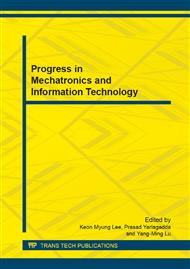p.259
p.267
p.274
p.280
p.284
p.288
p.294
p.298
p.302
Image Watermarking Technology Based on Lifting Wavelet and Fuzzy Cluster
Abstract:
A self-adaptive blind watermarking algorithm based on transform domain was proposed by combining lifting wavelet transform with fuzzy cluster analysis. Lifting wavelet transform were used to obtain the low frequency subgraph efficiently. In low frequency subgraph, FCM and HVS were combined to divide the texture region for embedding watermark. And the watermark image was encrypted by chaotic map. Contrastive attacking experiments show that this algorithm has preferable transparency and robustness, and can resist various types of attacks effectively.
Info:
Periodical:
Pages:
284-287
Citation:
Online since:
November 2013
Authors:
Price:
Сopyright:
© 2014 Trans Tech Publications Ltd. All Rights Reserved
Share:
Citation:


